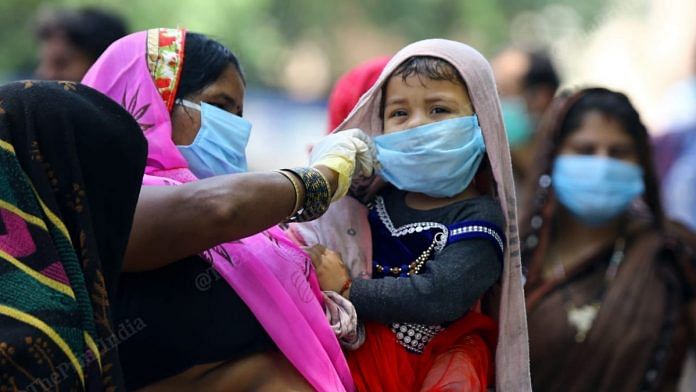New Delhi: Reinfection is “very very rare” in viral diseases, but it does seem to be happening in case of the novel coronavirus, Indian Council of Medical Research (ICMR) Director General and secretary health research Dr Balram Bhargava said at the weekly Covid briefing Tuesday.
The remarks come amid reports that some patients of coronavirus are contracting the disease after recovery, raising questions over the protection offered by antibodies.
“As I said when the case of the Hong Kong reinfection was reported, reinfection is very, very rare in viral infections. I had given the example of measles. When a person has measles, they are supposed to be protected for life, but there are some reinfections occurring,” Dr Bhargava said.
“Similarly, we have seen reinfections occurring in Covid-19 but it is not a matter of serious concern. Whenever reinfection has happened, both infections have been mild,” he added.
This is the first time the Government of India has officially admitted to the probability of Covid-19 re-infection. A couple of weeks ago, Health Secretary Rajesh Bhushan had dismissed as “hypothetical” questions about a health ministry staffer getting reinfected with Covid-19.
Also Read: ‘Covid positive’ again over a month after ‘recovery’ — Delhi cop’s case leaves experts puzzled
No shortage of oxygen
At the briefing, the government also sought to assuage concerns about an alleged shortage of medical oxygen in India, saying the country is comfortably placed.
“There are two kinds of oxygen — industrial oxygen and medical oxygen. India produces over 6,900 metric tonnes oxygen per day. As per this morning’s data, about 6 per cent of Covid-19 patients were on oxygen,” said Bhushan.
“These patients and also other non-Covid health requirements for oxygen together account for about 2,800 metric tonnes daily. The industry requirement is about 2,200 MT. So we have a buffer of about 1,900 metric tonnes,” he added.
However, Bhushan said there “is a need for states to monitor the inventory management at the hospital levels.”
The comments follow two back-to-back meetings between the central government and states on oxygen availability.
On 13 September, Bhushan and several other secretaries of the Government of India held a meeting with Maharashtra, Andhra Pradesh, Karnataka, Telangana, Gujarat, Rajasthan and Madhya Pradesh on ensuring adequate oxygen availability in all healthcare facilities, and unrestricted intra- as well as inter-state movement of oxygen. A day later, another meeting was held on the same issue.
Also Read: India and China are seeing rising coronavirus reinfections. But scientists aren’t surprised
India ‘distributed the curve’
Dr Bhargava introduced a new term in the Covid-control dictionary, as he said India has managed to “distribute the curve”. India is currently reporting 80,000-90,000 cases per day, and, for the past seven months, the country has been trying to “flatten the curve”.
Asked whether the surge that the country is currently witnessing is the “second wave” of Covid-19, Dr Bhargava said, “I do not know what you mean by a second. But what I can say is that… if you look at Europe and the US, they had a peak and then they came down. During that peak whether it was Spain or UK, Sweden or Italy, there were huge mortalities.
“The peak came down and then, recently, there has been a second wave in those countries. Fortunately, we took learnings from that in India and we were able to do what we call ‘distribute the curve’.”
According to Bhargava, India “distributed the curve in such a way that we did not have a large number of deaths”.
“That was attributed scientifically to the very effective lockdown held during the months of late March, April and May. We did not have a huge peak at all,” he said.
On a question about the sero-survey findings that India had close to 64 lakh cases by May itself — far higher than the actual tally, which stood at 49,30,236 on Tuesday — both Bhushan and Dr Bhargava said it was not correct to compare the results of a sero survey to the daily testing numbers.
Also Read: What is medical oxygen Covid patients need — how much India has & why there’s a shortage




Admit as in acknowledge, I suppose.